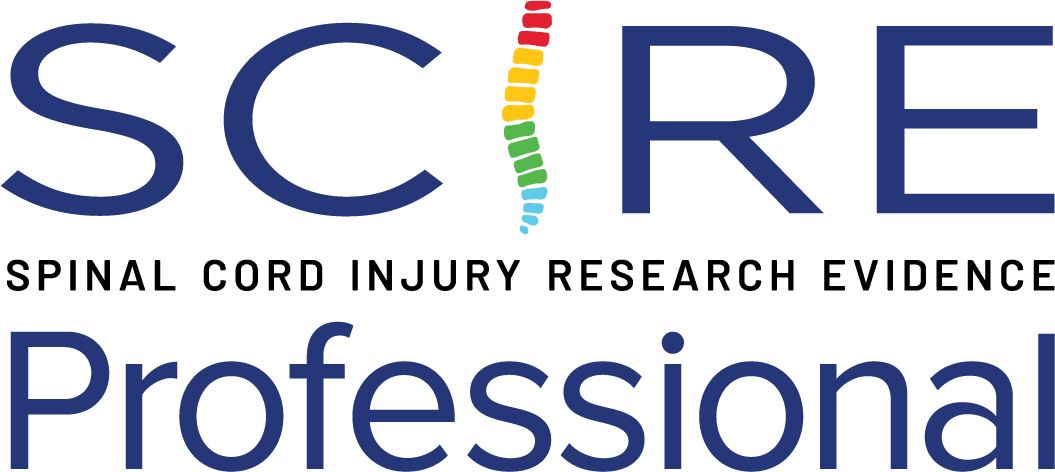Body-Weight Supported Locomotor Training (BWSLT) for Sitting Balance
There are different body-weight supported locomotor training (BWSLT) modalities that have been studied to determine the effects on sitting balance and trunk function in patients with SCI. However, these interventions have been extensively studied regarding their effects on standing balance and/or walking function (see Standing Balance section).
Discussion
There were eight studies that investigated the effects of various BWSLT modalities (e.g., robotic-assisted gait training [RAGT] and walking training with an exoskeleton, BWSTT, or multimodal cortical and subcortical exercise with partial body support) on sitting balance and trunk function in patients with chronic SCI (Chisholm et al. 2017; Khan et al. 2019b; Martinez et al. 2018; Piira et al. 2019a; Piira et al. 2019b; Okawara et al. 2022; Okawara et al. 2020; Tsai et al. 2021). There were more participants with incomplete SCI than with complete SCI (n=109, AIS A [n=19], AIS B [n=12], AIS C [n=26] and AIS D [n=26]).
Overall, these studies expressed contradictory results. In one RCT, Piira et al. (2019a), sitting balance (assessed by mFRT) was improved with 60 days of BWSLT as much as in those receiving usual care (which included overground walking). However, another RCT by Piira et al. (2019b) found that sitting balance (assessed by mFRT) significantly decreased by 8.6 ± 2.17 cm after 6 months (3 training sessions per week) of robot-assisted locomotor training (with the use of Lokomat®), compared with usual care. Lastly, in the cross-over RCT by Martinez et al. (2018), sitting balance, as measured by “sitting with back unsupported” subsection of the BBS and computerized posturography, did not improve either in the group who received BWSTT, nor in the group who performed multimodal exercise.
The remaining four studies included patients with SCI who received a different number of sessions of BWSTT with Lokomat or different exoskeletons (e.g. hybrid assistive limb [HAL], Ekso™, or ReWalk™) (Chisholm et al. 2017; Khan et al. 2019b; Okawara et al. 2020; Okawara et al. 2022; Tsai et al. 2021). Patients with chronic SCI showed promising results on trunk muscle strength (Okawara et al. 2022) and sitting balance (Chisholm et al. 2017; Khan et al. 2019; Okawara et al. 2020; Tsai et al. 2021). Surprisingly, the changes in anterior, posterior, and lateral trunk muscle strength showed significant positive correlations with age at baseline, indicating that older adult participants with chronic SCI experienced greater improvements than younger adults in trunk muscle strength following BWSTT with the voluntary driven exoskeleton (using the hybrid assistive limb [HAL]) (Okawara et al. 2022).
Conclusions
There is level 1 evidence (from 1 RCT: Piira et al. 2019a) that BWSLT with manual assistance does not provide more improvements than usual care in postural control in patients with motor incomplete and chronic SCI.
There is level 1 evidence (from 1 RCT: Piira et al. 2019b) that RAGT (with Lokomat®), compared to usual care, worsens the postural control (mFRT) in patients with chronic SCI.
There is level 2 evidence (from 1 RCT: Martinez et al. 2018) that neither BWSTT with LokomatÒ nor multimodal exercise (simultaneous balance and skilled upper extremity exercises with partial body-weight support [BWS]) for 48 sessions did not provide improvements in sitting balance in people with chronic paraplegia.
There is level 4 evidence (from 2 pre-post studies: Okawara et al. 2020; Okawara et al. 2022) that BWSTT with the voluntary driven exoskeleton (using the hybrid assistive limb [HAL]) provides an improvement in trunk muscle strength, especially in an older adults subsample, and in sitting balance, in people with chronic SCI.
There is level 4 evidence (from 2 pre-post studies: Khan et al. 2019b; Tsai et al. 2021) that exoskeleton-assisted walking (EAW) training (with ReWalk™), consisting of different mobility skills, improves some sitting balance parameters (the control of trunk movement) in patients with chronic SCI.
